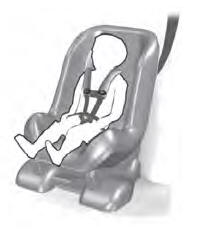Lincoln Aviator: Phone / Android Auto (If Equipped)
- Connect your device to a USB port.
- Follow the instructions on the touchscreen.
Note: You might need to enable Android Auto from the settings menu.
Note: Certain features of the system are not available when you are using Android Auto.
Switching Android Auto Off
 Select the settings option on
the
feature bar.
Select the settings option on
the
feature bar.
- Select Android Auto.
- Switch Android Auto off.
 Apple CarPlay (If Equipped)
Apple CarPlay (If Equipped)
Connect your device to a USB port.
Follow the instructions on the
touchscreen.
Note: Certain features of the system are not
available when you are using Apple CarPlay...
 Navigation (If Equipped)
Navigation (If Equipped)
Note: For more information, refer to our
website.
Select the navigation option on
the
feature bar.
Map view menu.
Zoom out.
Zoom in.
Route guidance menu...
Other information:
Lincoln Aviator 2020-2025 Owners Manual: Principle of Operation
WARNING: You are responsible for controlling your vehicle at all times. The system is designed to be an aid and does not relieve you of your responsibility to drive with due care and attention. Failure to follow this instruction could result in the loss of control of your vehicle, personal injury or death...
Lincoln Aviator 2020-2025 Service Manual: Removal and Installation - Glove Compartment
Special Tool(s) / General Equipment Interior Trim Remover Removal NOTE: Removal steps in this procedure may contain installation details. Release the clips and remove the finish panel. Use the General Equipment: Interior Trim Remover Release the clips and remove the switch...
Categories
- Manuals Home
- Lincoln Aviator Owners Manual
- Lincoln Aviator Service Manual
- Opening and Closing the Hood
- Fuel Quality
- Configuring The Head Up Display
- New on site
- Most important about car
Child Seats

Use a child restraint (sometimes called an infant carrier, convertible seat, or toddler seat) for infants, toddlers and children weighing 40 lb (18 kg) or less (generally four-years-old or younger).
Using Lap and Shoulder Belts
WARNING: Do not place a rearward facing child restraint in front of an active airbag. Failure to follow this instruction could result in personal injury or death.
Copyright © 2025 www.liaviator2.com
